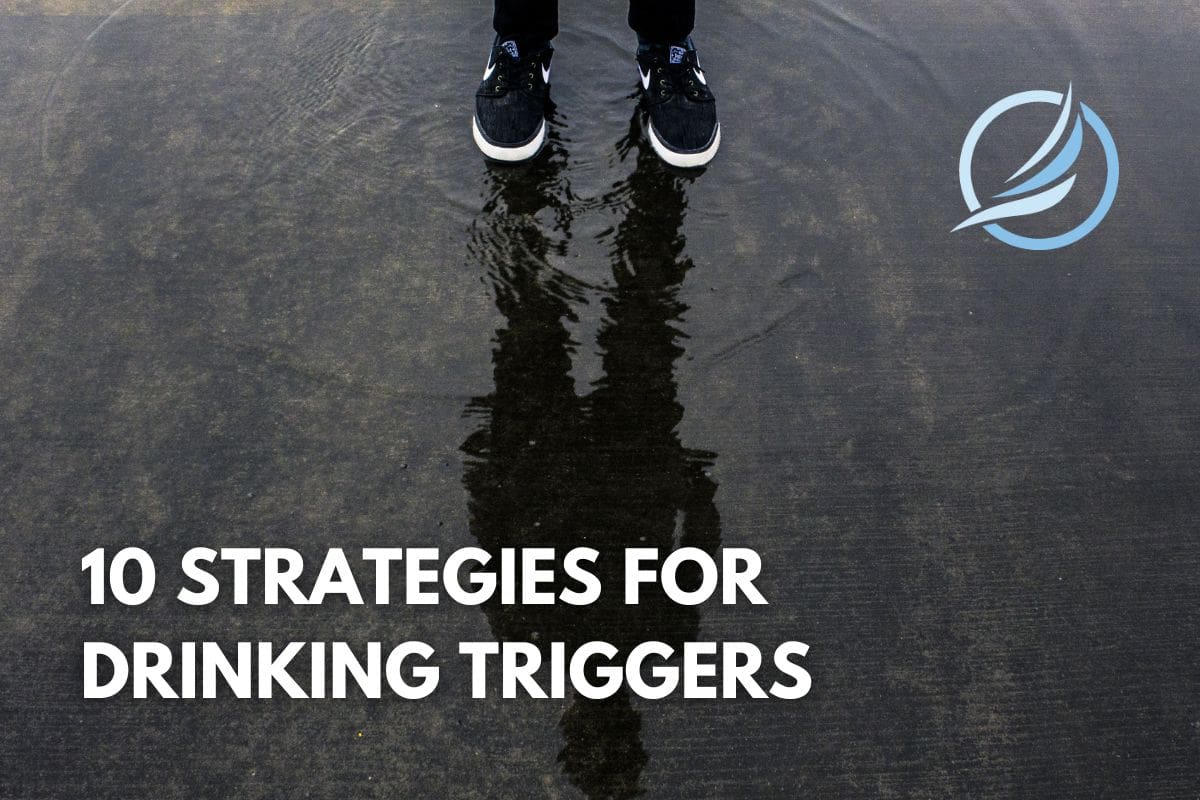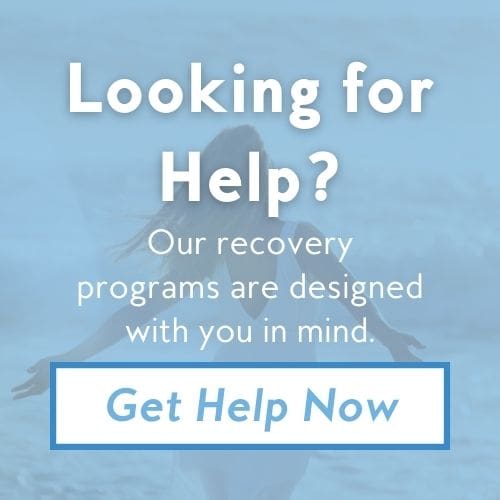Drinking triggers are situations that make us feel the urge to drink. For someone in recovery from alcohol use disorder, this can be very risky and potentially lead to a relapse.
“Hidden” triggers are more challenging to identify and, therefore, may strike unexpectedly and leave many wondering what led to an urge to drink in the first place. Being aware of hidden triggers and the strategies to identify them will help you know yourself better and make more informed decisions during your recovery journey.
This article will focus on the “hidden” triggers many people face during their recovery, how to spot them, and how to manage them to promote long-term recovery.
What Are Drinking Triggers?
Drinking triggers are situations that make someone crave alcohol. Common triggers include:
- Stress.
- Emotional distress.
- Social situations where alcohol is present.
- Exposure to environments associated with drinking.
- Memories linked to past drinking experiences.
“Hidden” drinking triggers are subtle or less apparent situations that can cause the urge to consume alcohol. Like “normal” triggers, hidden triggers can be deeply ingrained and linked to everyday activities or emotions, but they can be harder to spot, even for the individual who experiences them.
Strategies to Manage Hidden Triggers
The strategies to manage hidden triggers are similar to the ones you would use for more overt triggers. However, the fact that hidden triggers are more subtle makes them harder to spot.
Consider using the following strategies to identify and manage drinking triggers.
1. Learn to Identify Hidden Drinking Triggers
Start by writing down the triggers you’re aware of. For example, if you know you want to drink to celebrate reaching a goal, write it down.
However, you may not be aware of all your triggers, and that’s what makes hidden triggers so potentially risky for your recovery.
For those harder-to-spot triggers, consider using the following strategies when you feel the urge to drink but don’t necessarily know why:
- Work on being compassionate and accepting of your own emotions. Don’t immediately push them away or ignore them.
- Take the time to identify the negative emotions you’re feeling.
- Consider your options for feeling better: calling a friend, exercising, writing your feelings, and more.
2. Build Self-Awareness and Mindfulness
Self-awareness helps individuals recognize and understand their emotions, leading to a better understanding of triggers and other behavioral patterns. Mindfulness is a related idea: repeatedly focusing on your awareness of the present moment.
Self-awareness and mindfulness help identify triggers, develop coping strategies, and improve decision-making since they make more informed decisions.
Consider using the following mindfulness techniques to promote self-awareness and help you cope with triggers:
- Body scan meditation. Sit or lie down and slowly scan your body from head to toe, paying attention to any areas of tension or discomfort. Notice any thoughts or emotions that arise and acknowledge them without judgment.
- Mindful breathing. Find a quiet place and sit comfortably. Close your eyes and take slow, deep breaths. Focus on the sensation of the breath entering and leaving your body. If your mind wanders, gently bring your attention back to your breath.
- Mindful journaling. Set aside time each day to write about your thoughts, feelings, and any triggers you encountered. Reflect on how you responded to these triggers and what you can learn from the experience.
3. Develop Healthy Coping Mechanisms
Coping strategies are crucial for managing drinking triggers because they provide practical tools to handle cravings and prevent relapse. Hopefully, with the help of a therapist, anyone can develop effective coping mechanisms to help them control their responses to triggers, reducing the risk of returning to alcohol use.
Regardless of a therapist, some activities have proven to be effective as a coping mechanism during recovery from alcohol use disorder:
- Meditation to stay present.
- Regular physical exercise to reduce stress and anxiety.
- Seeking support from friends, family, or support groups.
- Establishing a structured routine to minimize exposure to triggering situations.
These strategies help build resilience and contribute to an environment that promotes long-term sobriety.
4. Create a Support System
Creating a support system is vital for successful recovery, as it provides emotional encouragement, accountability, and practical assistance. A strong support network helps individuals in recovery navigate challenges, reduces feelings of isolation, and reinforces positive behaviors.
Building a support system may take time, as it usually means involving family and friends through open communication, helping them understand your addiction, and encouraging their active participation in recovery activities.
You can also join support groups like Alcoholics Anonymous to gain even more of a sense of community through talking to people with shared experiences and receiving peer support.
Attending meetings regularly, engaging in group therapy, and seeking mentorship from those further along in their recovery journey are effective ways to build and maintain a robust support system.
5. Avoid High-Risk Situations
Avoiding high-risk situations is essential for preventing relapse by minimizing exposure to triggers. However, to avoid risky situations, it’s necessary to first understand them and plan ahead for situations where you may unexpectedly experience triggers.
Using the knowledge you’ve gathered from identifying triggers, start creating a “plan of action” for when you experience them. Examples include:
- Having a list of supportive contacts to call.
- Practicing declining offers of alcohol.
- Carrying a non-alcoholic drink in social settings.
This preparation will be vital in helping you navigate complicated situations during your recovery journey.
6. Seek Professional Help
Seeking professional help is crucial in managing triggers and recovering from alcoholism. Therapy and counseling offer personalized support, helping individuals understand the root causes of their addiction and develop tailored coping strategies for their triggers.
Effective therapies for alcohol use disorder include:
- Cognitive Behavioral Therapy (CBT). To address negative thought patterns.
- Motivational Interviewing (MI). To enhance motivation for making changes
- Dialectical Behavior Therapy (DBT). To improve emotional regulation.
- Family Therapy. To strengthen support systems.
These therapies provide comprehensive tools to manage triggers, cope with stress, and maintain long-term sobriety.
7. Utilize Recovery Tools and Resources
Consider the following recovery tools and resources when exploring strategies to manage drinking triggers:
- Alcoholics Anonymous’s website.
- SAMHSA’s National Helpline for treatment referrals and information.
- SAMHSA’s treatment provider directory.
- The website of the National Institute on Alcohol Abuse and Alcoholism.
- Al-Anon’s website, if you’re worried about someone with alcohol use disorder.
- Alateen’s website for teens affected by someone else’s alcohol use disorder.
Informing yourself about alcohol use disorder will help you understand your triggers better and act accordingly. You can join these groups or use their resources whenever you want to learn more about your recovery.
8. Continuous Learning and Adaptation
Sustained sobriety requires ongoing education and flexibility. Continuously learning about addiction and recovery helps individuals stay informed about effective strategies and potential pitfalls.
Adapting to new life circumstances and stressors by updating coping mechanisms ensures resilience against relapse. Engaging in workshops, reading relevant literature, and staying open to new therapies or support methods can reinforce long-term recovery.
9. Regular Self-Assessment and Reflection
Regular self-assessment and reflection are vital for recognizing progress, identifying emerging triggers, and adjusting strategies.
Journaling, setting personal goals, and periodically reviewing one’s journey help maintain awareness and accountability. Reflecting on successes and challenges fosters growth and reinforces commitment to sobriety.
10. Stay Engaged in Recovery Community
Active participation in a recovery community provides continuous support, accountability, and shared experiences.
Attending meetings, joining support groups, and fostering connections with others in recovery offer a sense of belonging and mutual encouragement. Engaging with a supportive network helps individuals navigate challenges and celebrate milestones together, promoting sustained sobriety.
Identifying Hidden Drinking Triggers
Identifying your hidden triggers is essential to start managing them, hopefully with the help of a therapist. Explore the following common hidden drinking triggers.
Emotional Triggers
Hidden emotional triggers are underlying feelings or emotional states that can subtly provoke the urge to drink, often without the individual being fully aware of the influence. These triggers are typically linked to unresolved emotions or habitual responses to specific feelings.
Some common emotional triggers may include:
- Boredom.
- Loneliness.
- Stress and anxiety.
- Happiness and the desire to celebrate achievements or goals.
- Resentment and anger.
- Guilt, shame, and other negative self-perceptions.
Environmental Triggers
Hidden environmental triggers are subtle aspects of each person’s surroundings that can unconsciously prompt the urge to drink. These triggers may often be linked to specific places, objects, or situations associated with past drinking.
Environmental drinking triggers may include:
- Specific locations associated with drinking, like a friend’s house (even if there’s no alcohol around).
- Seasonal changes and holidays, if the individual has traditionally drunk during those times.
- Specific times of the day, like after work or during late evenings.
- Weather conditions.
- Smells, sounds, or sights that remind them of past drinking experiences.
Social Triggers
Hidden social triggers are subtle social interactions or relationship dynamics that can unconsciously prompt the urge to drink. These triggers are often tied to specific people, social settings, or types of interactions that have been associated with drinking in the past.
Common hidden social triggers include:
- Interactions with specific people like friends, family members, or colleagues who were drinking companions.
- Pressure to drink while in social settings.
- Celebratory events like weddings, birthdays, or holidays where drinking is common.
- Romantic situations like date nights or anniversaries.
- Work-related socializing.
- Reunions with old friends.
Sensory Triggers
Hidden sensory triggers are subtle sensations that prompt the urge to drink. Common sensory triggers may include:
- Scents like the aroma of certain foods, the smell of a particular type of alcohol, or the scent of a familiar environment.
- Hearing the clinking of glasses, pouring a drink, or a particular song.
- Seeing alcohol bottles, bar setups, advertisements for alcohol, or specific colors and lighting associated with drinking environments.
- Tasting certain foods or flavors that were frequently consumed with alcohol.
- The feel of a glass in hand or the sensation of carbonation.
Understanding Long-Term Triggers Helps Manage Long-Term Addiction Recovery
Hidden drinking triggers can be particularly risky because they can sneak up on us when we least expect them and leave us confused as to why we feel the urge to relapse back into drinking.
We encourage you to seek help for your alcohol use disorder and discuss triggers with a specialist. It will help you set the stage for your long-term recovery.


































